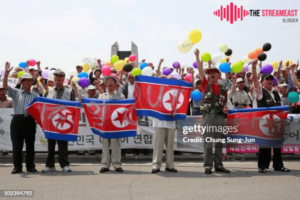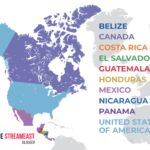Introduction: North Korea South Korea Balloons
The term “North Korea South Korea balloons” refers to the unique exchange method used to send messages and information across the highly restricted border between North and South Korea. In an environment where direct communication is nearly impossible, balloons have become symbolic messengers that convey messages, news, and opinions across the Demilitarized Zone (DMZ). These balloon launches are complex and have been the focus of both hope and controversy.
Why Balloons Are Used as Messengers Across the Border
- Communication Barriers
Given the strict border control, north korea south korea balloons serve as one of the few channels for information exchange between the two countries. In the absence of other media, these balloons are able to reach North Koreans with messages from the outside world. - Symbolic Significance
For many South Koreans, sending balloons is symbolic, representing an act of resistance or a call for unity. The balloons often carry leaflets, small radios, and other materials, spreading messages about democracy, human rights, and news from around the world. - The Role of Activists
Activists, particularly defectors from North Korea now living in South Korea, play a significant role in these balloon campaigns. They aim to provide North Koreans with access to information that their government restricts, seeing it as a mission to inform their fellow citizens of life outside North Korea.
The Technology Behind North Korea South Korea Balloons
- Balloon Materials
North Korea South Korea balloons are crafted from materials that allow them to carry payloads effectively and remain airborne over long distances. Many balloons are designed to be biodegradable, minimizing environmental impact. - Payloads and GPS Tracking
The balloons are often equipped with GPS devices, enabling activists to monitor their flight paths and target areas within North Korea. Common payloads include pamphlets, flash drives, food, and even cash, aiming to support citizens directly. - Flight Patterns and Weather Conditions
Balloon launches depend heavily on weather conditions, especially wind patterns, to ensure they reach their intended destinations. Activists monitor forecasts carefully to select optimal launch times.
Controversy Surrounding the Balloon Campaigns
- North Korean Reaction
North Korea has expressed strong opposition to these balloon campaigns, viewing them as a form of psychological warfare. The government has labeled the launches as provocative actions by South Korea, leading to heightened tensions between the two countries. - South Korean Government Restrictions
Although many in South Korea support the campaign, the South Korean government has imposed restrictions on balloon launches, citing security concerns. Officials argue that the launches endanger border-area residents and provoke North Korean retaliation. - Human Rights Concerns
Some human rights groups believe that restricting balloon launches curtails freedom of speech and expression. They argue that the campaign represents a peaceful attempt to communicate with North Koreans, and limiting it compromises the rights of South Korean citizens.
The Impact of Balloons on Inter-Korean Relations
- Rising Tensions
The North Korea South Korea balloons have occasionally led to military standoffs. North Korea has responded to some launches by threatening military action, heightening fears of escalation. - A Tool for Unity or Division?
While some view the balloons as a step towards unification, others argue that they strain relations. North Korean citizens who encounter the balloons may experience increased government scrutiny, leading to internal conflicts within North Korea. - International Reactions
The United States and other countries have expressed varying opinions on the issue. Some Western nations support the balloon campaigns as an effort to foster human rights, while others caution that it could destabilize the region further.
How North Korea and South Korea Handle the Balloon Launches
- South Korea’s Position
South Korea faces a balancing act, supporting free expression while preventing unnecessary provocations. Recently, laws have been enacted to restrict balloon launches near the border, aiming to ease tensions. - North Korea’s Countermeasures
North Korea has often responded by threatening action against South Korea, including severing communication lines and launching propaganda balloons of its own. These responses demonstrate the sensitive nature of the balloon campaigns. - Cross-Border Communication Efforts
Both nations have attempted diplomatic negotiations to manage these balloon campaigns. South Korea has proposed a mutual ban on all forms of cross-border propaganda, but implementation remains challenging.
How the International Community Views the Balloon Campaigns
- United Nations’ Stance
The United Nations has monitored the balloon situation closely, recognizing both the humanitarian aspect of the campaigns and the risks they pose to stability. - Human Rights Organizations’ Involvement
Organizations like Amnesty International and Human Rights Watch support the campaigns for the information-sharing potential they hold for North Koreans. These organizations highlight the importance of reaching isolated populations. - Global Peace Advocates
Peace organizations generally oppose any actions that increase tensions in the Korean Peninsula. They argue that, while balloon campaigns raise awareness, they risk triggering adverse reactions from North Korea.
Benefits and Drawbacks of the Balloon Campaigns
- Pros of North Korea South Korea Balloons
The campaigns spread valuable information, providing North Koreans with insights into the outside world. The messages often encourage critical thinking and may inspire citizens to seek information beyond state-sponsored news. - Cons of North Korea South Korea Balloons
However, the balloon campaigns may inadvertently place North Koreans in danger, as the regime punishes those found with foreign materials. Additionally, the campaigns could provoke North Korea, threatening stability in the peninsula.
The Future of North Korea South Korea Balloons
Potential for Digital Communication
Some advocates suggest exploring digital methods to communicate with North Koreans, such as shortwave radio broadcasts, to minimize security risks associated with balloon campaigns.
Government and Activist Collaboration
Increased collaboration between South Korean authorities and activists could yield safer, more effective ways to reach North Koreans without provoking the regime.
Diplomatic Pathways
While balloon launches have achieved limited success, diplomatic solutions are essential to address the root causes of isolation in North Korea. Peaceful negotiations and human rights discussions may provide more sustainable communication avenues.

FAQs: north korea south korea balloons
What is the purpose of North Korea South Korea balloons?
The balloons are used to deliver information, messages, and sometimes goods across the border to inform North Koreans about the outside world.
Are the balloon launches legal in South Korea?
South Korea has imposed some restrictions on these launches, particularly near border areas, due to safety and diplomatic concerns.
What items do the balloons carry?
The balloons may contain leaflets, radios, USB drives, food, or cash to reach North Koreans and provide outside perspectives.
How does North Korea react to these balloons?
North Korea opposes the balloons, considering them a form of propaganda and often responds with threats or countermeasures.
Why are balloons used instead of other methods?
Balloons are relatively easy to deploy and can reach areas that are otherwise inaccessible due to North Korea’s isolation.
Conclusion: north korea south korea balloons
The use of north korea south korea balloons exemplifies the complex relationship between the two nations. While the balloons serve as a method for spreading messages of freedom and awareness, they also present challenges, provoking responses from North Korea and raising safety concerns. As the world observes, these campaigns underscore the difficulty of reaching isolated populations under authoritarian regimes. Finding safer, more effective methods of communication may prove essential for fostering unity and stability on the Korean Peninsula.









